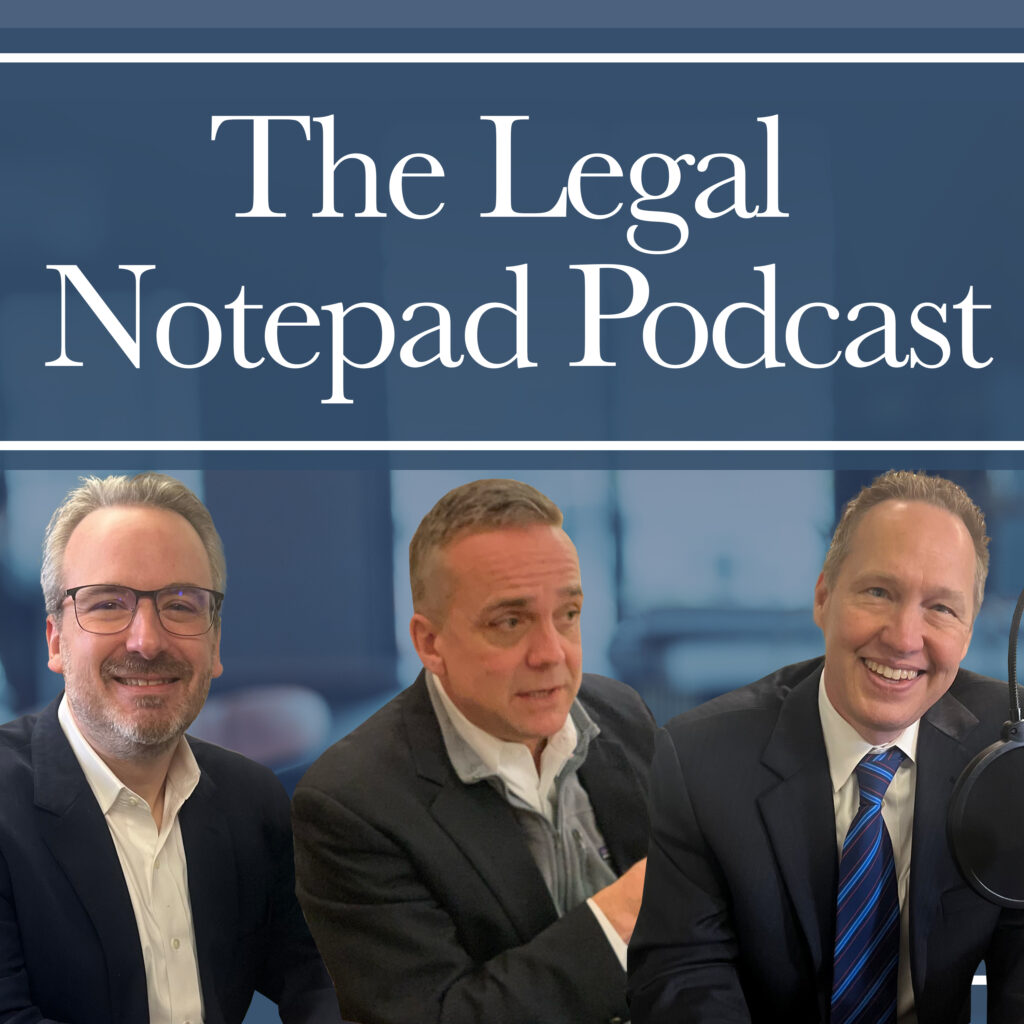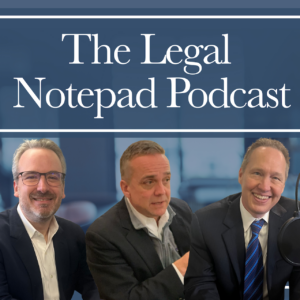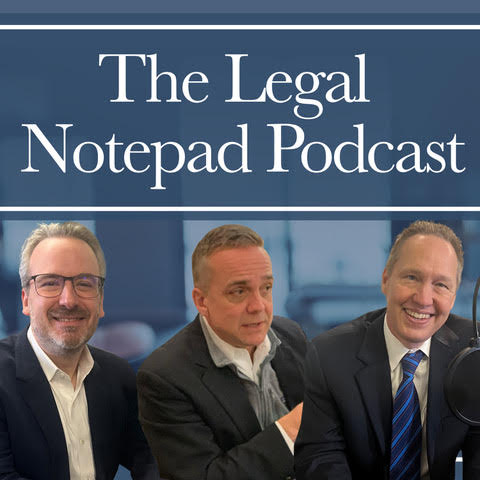Episode 13: Louisville attorneys Rob Mattingly and Kevin C. Burke discuss a recent case involving the direction of PIP benefits for medical expenses. Rob and Kevin are joined by Lauren Byrn and for the second time, attorney Adam Redden.
Editor’s Note: If you are an attorney and would like CLE credit for this episode, visit the Kentucky Justice Association website, click the Education and Training tab and look for the podcast.
TODAY’S LEGAL QUESTION:
Lauren asks, “What is the current state of an insured’s ability to direct no-fault benefits?”
In Kentucky, many of the PIP carriers traditionally paid the invoice, as they were submitted. The option of directing specific invoices to be paid, instead of others, could be challenging. Most carriers wanted to pay on a first-in, first-paid basis. That has now changed, based on Erie Insurance Exchange v. Johnson (Kentucky Supreme Court, 2024-SC-0018).
In our previous episode, we discussed the liability of an adult when their minor uses their car and causes a wreck (Episode 12).
PIP Direction (not the boy band)
Kevin clarifies that PIP Direction is not a new boy band. This prompts the team to explore Lauren’s Justin Timberlake crush.
The statue involved in Erie Insurance Exchange v. Johnson is KRS 304.39-241, in the Motor Vehicle Reparations Act. It allows an insured seeking no-fault benefits to direct the payment of those benefits “among the different elements of loss.”
Rob points out that the Court specifically mentions the term basic reparations benefits can be used interchangeably with PIP benefits.
The case involves a motor vehicle accident. Two individuals sought various medical treatments. Generally PIP benefits cover $10,000 in medical expenses, lost wages, etc.
Kevin advises non-lawyers to consult with and attorney to reserve the PIP benefits. The carrier is interest in paying the benefits as quickly as possible, but that may not be in the insured’s best interest.
In the Erie case, the plaintiff’s attorney notified Erie to reserve the PIP benefits and expressed the desire that the chiropractor be paid from the benefits, rather than the hospital bill. Erie responded claiming the plaintiff could not direct the payments, beyond at the category-level. As a result, Erie filed suit.
Ultimately, the circuit court agreed with the claimants (e.g. the insureds). In the court’s decision, it noted that the decision potentially affects millions of Kentuckians. Interestingly, this is a case of first impression. The court found that the claimants could direct the medical expenses.
The case went to the court of appeals. The court affirmed the circuit court’s ruling. The case was accepted on discretionary review by the KY Supreme Court. When the case made it to the Kentucky Supreme Court in 2022, the Court had to throw it out, due to a lack of jurisdiction.
There Was No Magic Language
The circuit court’s opinion did not fully and finally resolve all issues in the case. The direction of benefits issue wasn’t resolved. Additionally, there was a claim for accrued interest and a claim for attorney fees. Thus, the Supreme Court found that the case was not appealable. It didn’t contain the magic language: “Final and appealable with no just reason for delay.”
Rob and Kevin discuss how attorneys can avoid this situation. Kevin explains that if there are still unresolved claims, under CR5402, the opinion must say, “Final and appealable with no just reason for delay.” If that specific language is not included, it’s going to get kicked back down to the lower court.
Kevin explains this is non-waivable, even if the issue isn’t raised by the parties. The court has a duty to raise it on its own. In this particular case, the court of appeals overlooked the defect.
Once the case goes back down, a new order is entered, addressing the direction issue, interest, attorney fees and adds the magic language. It goes back to the court of appeals, which affirms the circuit court’s ruling in favor of the claimants. Once again, the KY Supreme Court takes the case for discretionary review. Eventually, it results in the 2025 opinion.
Standard for Review on a Legal Issue
This will be a de novo review. The court doesn’t pay deference to the court of appeal’s opinion or that of the circuit court. The Court is evaluating it, anew, based on what the statute says regarding the circumstances of the case.
The issue involving the direction of benefits received a de novo review. The other issues were reviewed using a different standard, because there was an abuse of discretion.
Interpreting “The Element of Loss” Language
The Court has various mechanisms for interpreting language. In this case, they went through statutory interpretation. Adam notes a few things in the opinion.
Page 9 – “…Carry out the intent of the Legislature.”
Adam asks Kevin what the court is saying with this language. The Court is using the general assembly’s intent as its north star.
Additionally, there’s language addressing any ambiguity. The Court will rely on statutory interpretation to clear up the ambiguity and resulting confusion.
There’s also a statement that, “the Legislature meant exactly what said and said exactly what it meant.” Ideally, the general assembly will use plain language, however, as Kevin notes, it can’t envision every possible scenario. When applied to specific circumstances, ambiguities can arise. These are termed, “latent ambiguities.”
Page 10 – “…Look to the common meaning of the particular word chosen…” This again emphasizes the objective of using plain language. Issues arise when there are multiple definitions of words.
Additionally, Adam noticed “…We must not be guided by a single sentence of a statute. We must look to the provisions of the whole statute in its object and policy.” Kevin explains this emphasizes the importance of context.
How the Court Used these Tools to Interpret the Elements of Loss
It’s important to remember the Supreme Court is talking to multiple audiences, beyond the parties themselves. The Court wants to show its work, so to say.
They noted the word “loss” is defined in the MVRA. However, there is no definition for “element of loss.” The court said element is ambiguous. It also considered other relevant statutes and how they’ve changed.
To resolve the issue, the considered the intent of the MVRA. It’s to protect accident victims, as listed at the outset of the Act. This drives the analysis, regarding how “elements of loss” are defined. Therefore, the elements would include the broad categories, such as medical expenses and lost wages, but also the narrow categories, such as the EMS bill, the chiropractor bill, the hospital bill (the sub-categories).
Based on the analysis, the Court found the claimants were within their rights to direct the PIP benefits paying for individual elements of loss. For instance, pay the EMS bill, but not the hospital bill. The health insurance might be used to pay the hospital bill, instead.
Page 20 – “…but we are upholding [the court of appeals] for different reasons.” In this case, the Supreme Court agreed with the court of appeals, but while they arrived at the same answer, the got there via different paths. Kevin notes this isn’t all that uncommon in the appellate world.
How Did the Court Decide on the Remaining Issues?
There were still questions involving the interest for the delay of payments and the attorney fees.
The Court did find that the claimants were due interest, based on the delayed payments. There are 2 interest rates that might apply (12% and 18%). The trial court found Erie acted without reasonable foundation, therefore the court assessed the 18% interest rate.
The circuit court awarded attorney fees, as well. This was for the first opinion and for the second opinion. The court of appeals affirmed both the interest rates and the fees.
The Kentucky Supreme Court said the 18% was not warranted, because the question was unsettled. Subsequently, it assessed the 12% interest rate. Because the law was unsettled, the Court denied the attorney fees.
That’s a wrap on today’s discussion. We hope you found the discussion insightful. As always, we encourage you to share this episode with your colleagues.
If you’d like the case notes, please sent us an email request and we’ll be happy to email you the file including the cases, rules, etc.
You can follow our podcast on a variety of platforms including, Spotify, iHeartRadio, Amazon Music, Audible, Apple Podcasts and many more. Thanks for taking the time to listen.
For more information about the Law Offices of DeCamillis and Mattingly, PLLC
Address: 138 S. Third Street, Louisville, KY 40202 (across from The Old Spaghetti Factory)
Phone: (502) 589-2822
Website: DeCamillisMattingly.com
To Contact Kevin Burke:
Website: BurkeNeal.com
Phone: (502) 709-9975
Until next time, go find one thing you can do to change the world!
The Kentucky Bar Association Requires Us to State “This is an advertisement.”




